By Shelby Beard, Special Collections Intern
UNC Asheville’s Special Collections is home to a large collection of John Martin’s Book magazines. The John Martin’s Book collection contains forty bound volumes and one hundred and nine individual issues, ranging in publication date from 1914 through 1933.
Who Was John Martin?
Morgan von Roorbach Shepard was born in 1865 and lived in poverty for the first years of his life in Maryland. Despite his circumstances, he lived happily with his “joy-giving” mother until she died when he was nine years old, leaving him in the care of a number of boarding schools until he was sixteen and he began to face the world alone. For years he worked odd jobs engineering, herding livestock, mining, ranching, street car driving, and he even claimed to have fought in a Central American revolution. Eventually he ended up in San Francisco and became a banker, which remained his employment for thirteen years and which Shepard considered repressing and dull work.
In early 1898 Shepard started a small publishing company in partnership with a book dealer. During their time together Shepard and his partner, Paul Elder, published about forty books, many of which were targeted at children and some of which Shepard wrote and/or illustrated himself (“Paul Elder & Company”). Shepard worked with the company until 1904 and then traveled Europe, ultimately returning to San Francisco broke and jobless a couple of years later. He began designing greeting cards, which only lasted until 1906 when his office building was destroyed in an earthquake. Shepard then moved to New York City.
While recovering from an injury, Shepard began to write poetry for children’s magazines, and here he seems to have found his calling. After the earthquake brought his professional life to a halt, Shepard found joy in writing letters to children who were sick in hospitals or “lacking gladness” in their lives. He “yearned to give other children some measure of the joy and good that had been [his] ‘once upon a time’”, the joy he had experienced with his mother as a child (Martin). The individual letters eventually grew into a subscription service, and from there he followed his “hidden heart desires” and began to turn his passion for bringing happiness to children into John Martin’s Book.
John Martin’s Book was inspired by Shepard’s love for children and his mother’s love for life. When he was young, Shepard’s mother encouraged his imagination and creativity. In fact, the idea of John Martin’s Book was born of a story his mother used to tell him about a group of birds that lived near the family home. Shepard’s mother would tell him stories about these birds, and “John Martin-bird” was the leader of the group. He signed those first letters with the pseudonym, John Martin, and would from then on use that pen name when writing in his magazine.
What is John Martin’s Book?
Children’s periodicals began to gain popularity in the Victorian “age of children”. Increased literacy and general education in the eighteenth century lead to an increase in children’s literacy amongst the middle class. With this new level of literacy came a concern for what kind of things children should be reading. In the Victorian era, literature was considered “a potent force capable of immense good or harm”, and was to be handled with care (Lang 17). Theories of childhood purity and the desire to protect childhood innocence rose in popularity over the previously dominant puritanical fixation with the original sin. A parent could not entrust their child’s innocence in just any publication, and so the popularity of children’s books and magazines, written with these new ideals in mind, skyrocketed. This trend continued through the Victorian era and into the twentieth century.
John Martin’s Book was first published as such in 1913. The magazine was aimed at children from ages three to ten, which Shepard considered to be the period in childhood when values are shaped. He adopted a policy of writing “right and only what is right for children” and aimed for each issue to be wholesome and valuable to children’s development (Martin).
What was John Martin’s Book Teaching?
The pages of each issue of John Martin’s Book are filled with colorful illustrations and whimsical writing meant to engage the child readers’ imagination and moral compass. The goal of the magazine was to entertain young children in a wholesome and “exceptionally constructive” way, providing them with content they could enjoy with their parents or on their own (Martin). Every issue included a number of short works ranging from retellings of old fables and fairy tales, to summaries of historical events, to regular installments of stories revolving around a specific character. Some pages were even made to be interacted with, including coloring pages, puzzles, and cut outs.
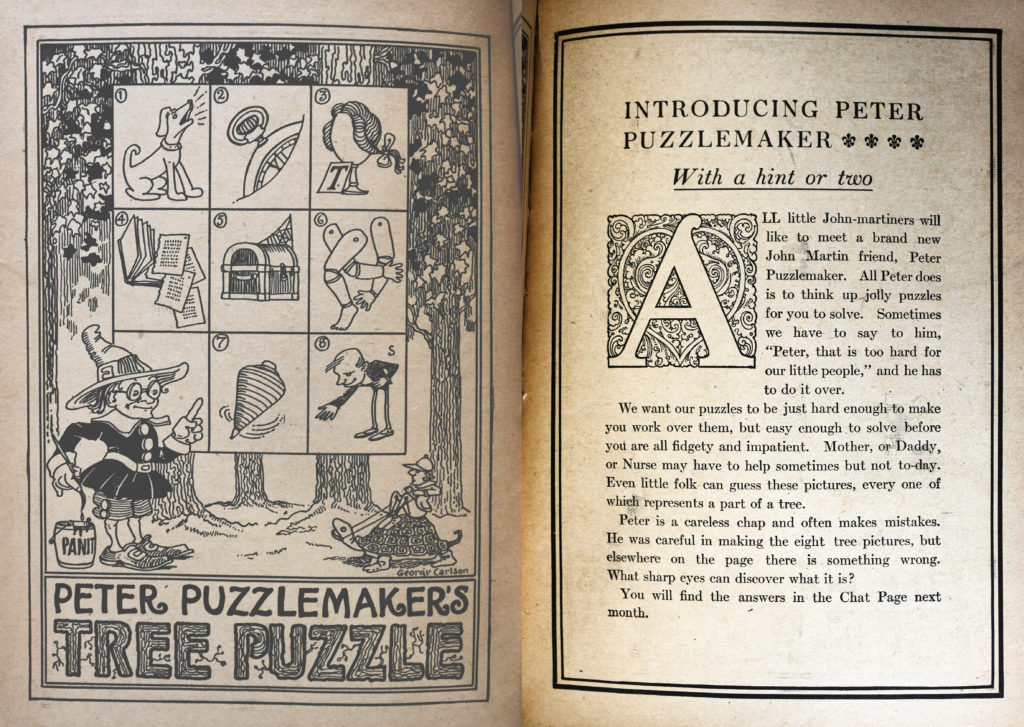
This is the first appearance of a regular installment in the magazine, Peter Puzzlemaker. Peter “thinks up jolly puzzles for [children] to solve”.
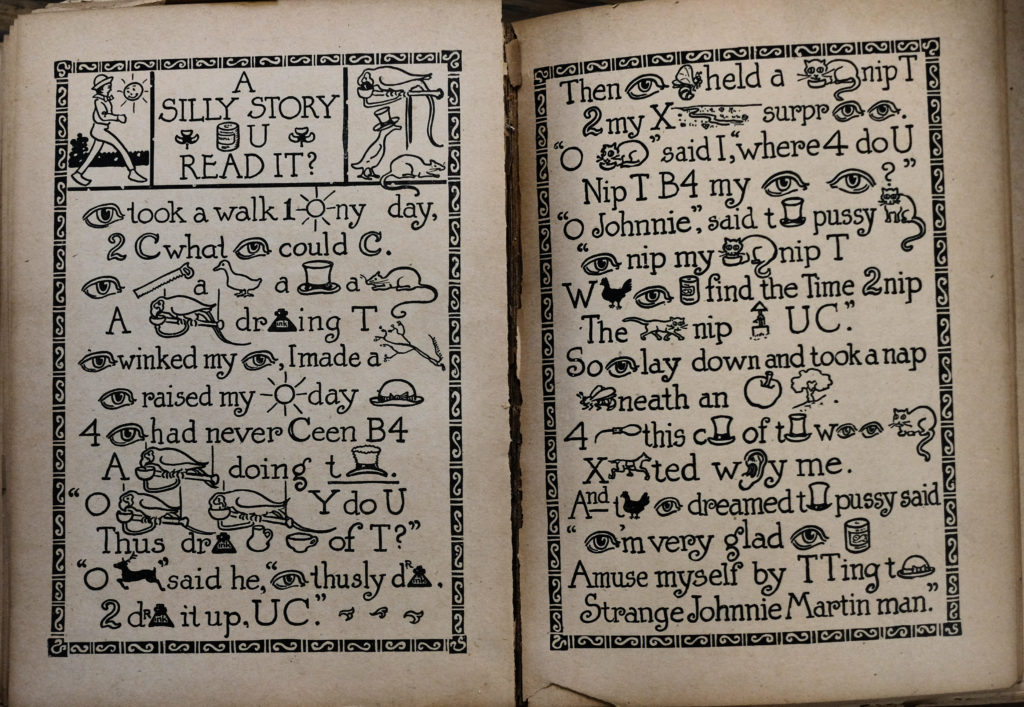
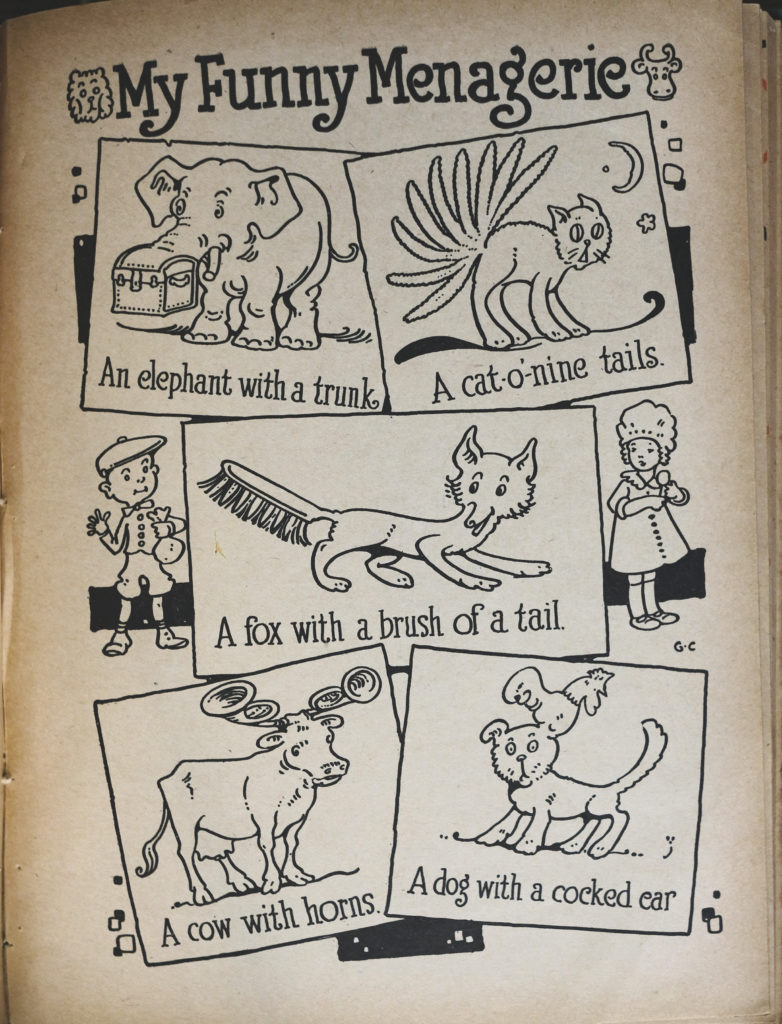
Every selection in the magazine was meant to entertain a child, and to instill messages of positivity, love, and happiness. Even the advertisements were carefully selected to reflect the values of the John Martin’s Book company. Shepard says in his article “The Substance of Dreams”, in which he details his motives behind creating John Martin’s Book, “I take the responsibility of preserving the right of children to have only the truest influences brought to them… I will not exploit children for money gain or popularize John Martin’s Book for ‘circulation’ ends” (Martin). Shepard wrote the advertisements himself (or supervised a colleague doing so), and nearly always made something as simple as a soap ad into an engaging story for children to read.
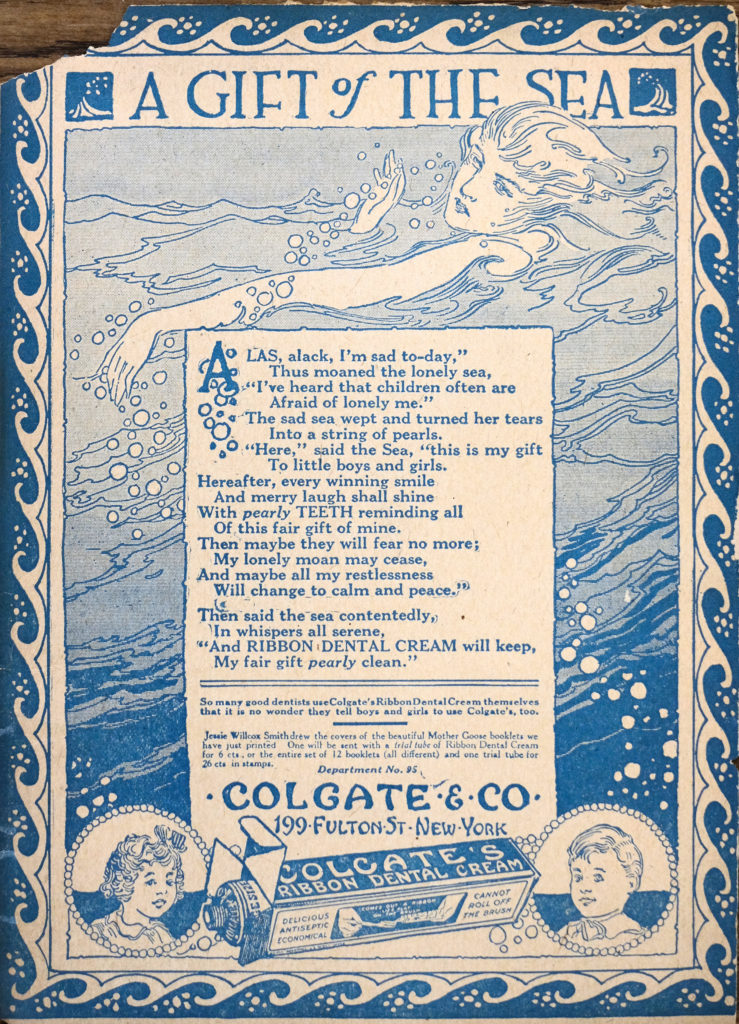
In addition to whimsical games, poems, stories, short plays, and advertisements, John Martin’s Book typically included pieces that invoked God and/or piety. Mostly from Christian influence, though not always explicitly denominational, these pieces were light and peaceful, aiming to express love to the children reading and instill religious conviction from a young age.
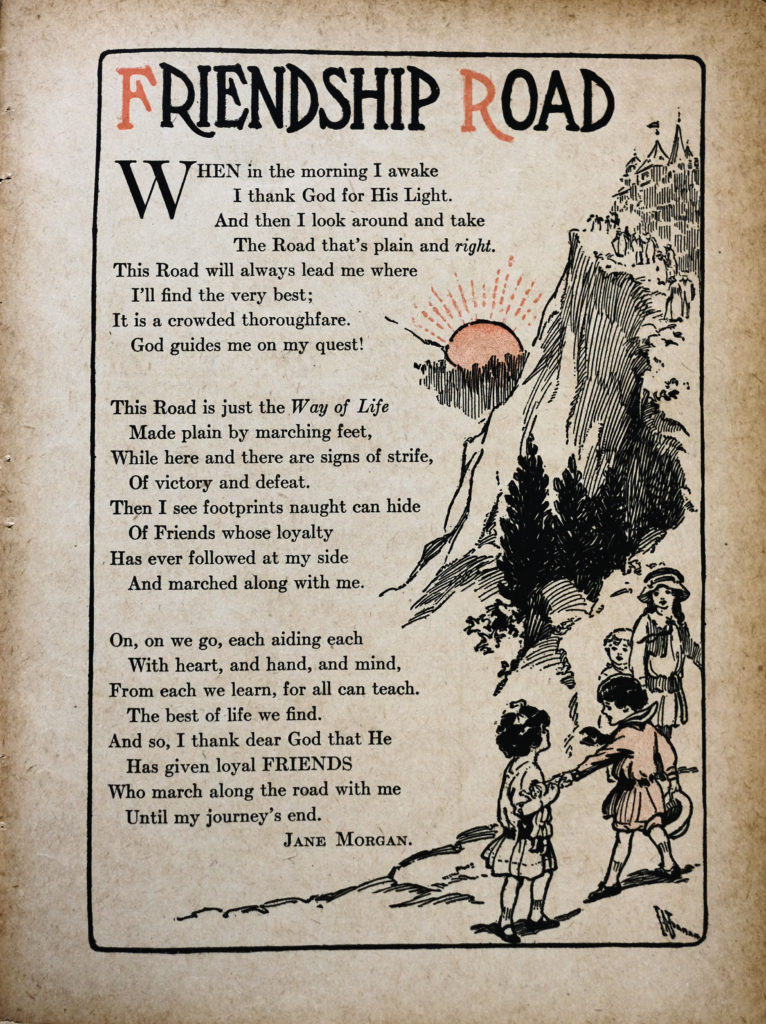
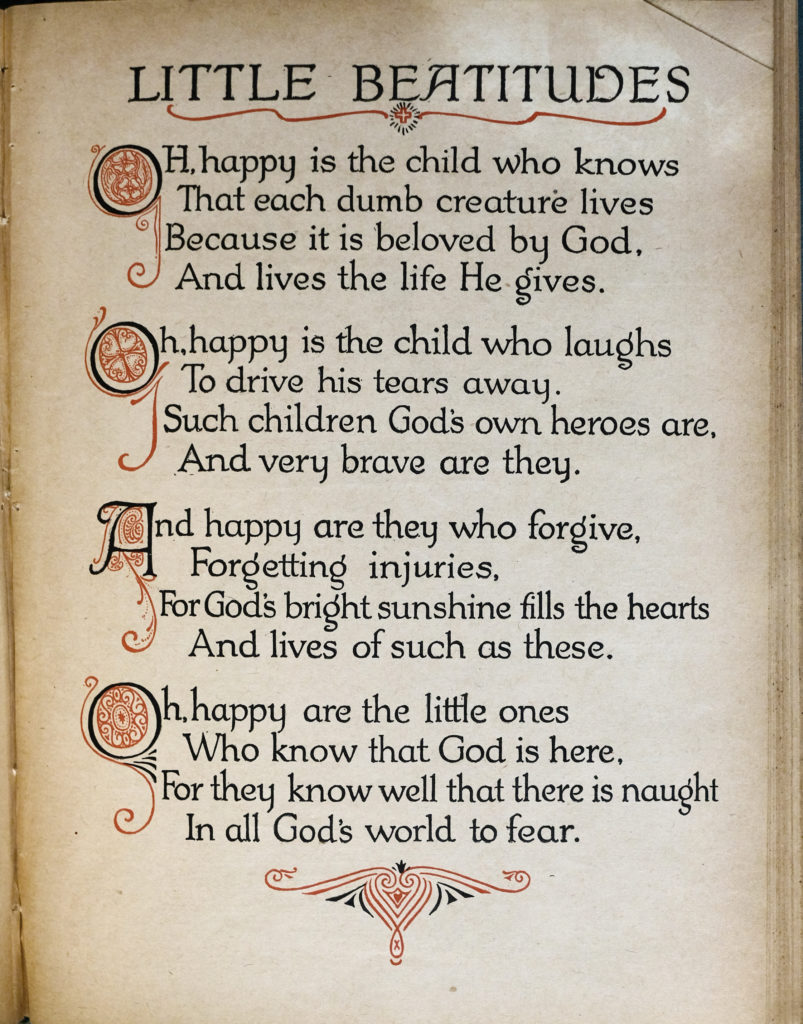
It is true that John Martin’s Book was never extremely lucrative, in the early days Shepard was fighting to break even, but he always said he wasn’t in it for the money. The purpose of this magazine was to provide a safe space for children. Parents never had to worry what would be in the next issue of John Martin’s Book, and children could always expect to be entertained.
Shepard was not the only person writing for John Martin’s Book. As the magazine grew in popularity, Shepard brought on new editors to assist him in creating content, including Helene Jane Waldo, who remained on Shepard’s editorial staff until the magazine’s final issue in 1933 (Gardner 151). John Martin’s Book often included pieces submitted by guest authors, who would be credited in the magazine alongside their works. Regardless of the size of his team, Shepard was the only person to write to the children as John Martin.
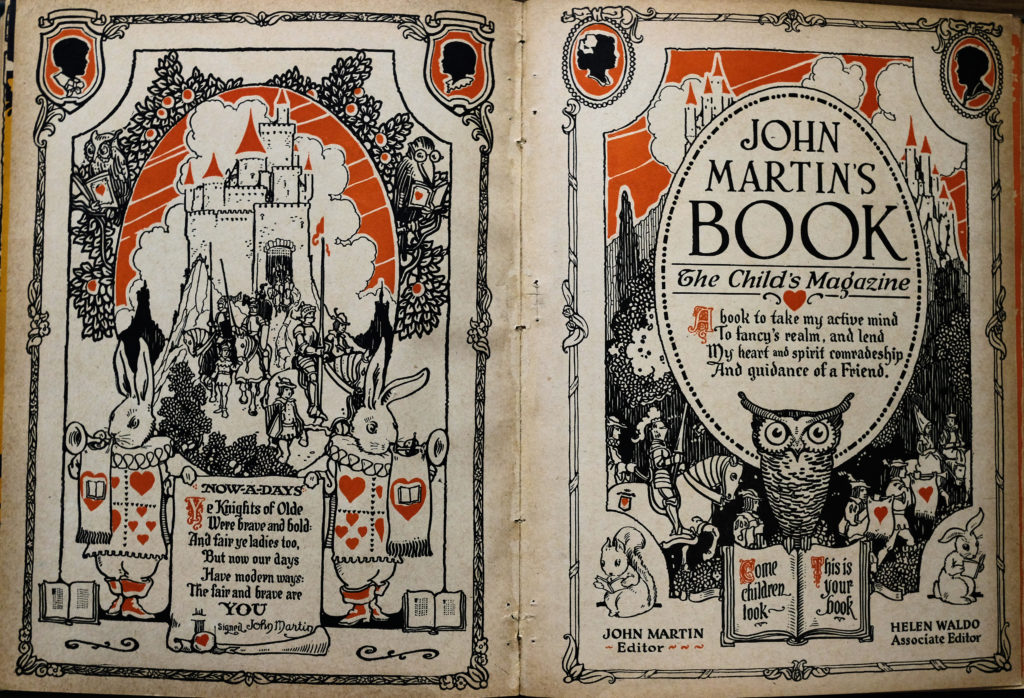
Little has been written about John Martin’s Book, and few copies of the earliest editions have survived. However, this magazine remains a shining example of children’s literature from the early twentieth century. As stated in a bulletin in the September 1915 issue of the magazine, the purpose of John Martin’s Book was “to make little children happy”. Shepard’s whimsical writing and editorial style captured the hearts of tens of thousands of children, and his clear love for these children is apparent in his fondly, if scarcely, remembered magazine.
Works Cited/Referenced
Gardner, Martin. “John Martin’s Book: An Almost Forgotten Children’s Magazine.” Children’s Literature, vol. 18, no. 1, 1990, pp. 145–59. Project MUSE, doi:10.1353/chl.0.0682.
Lang, Marjory. “Childhood’s Champions: Mid-Victorian Children’s Periodicals and the Critics.” Victorian Periodicals Review, vol. 13, no. 1/2, 1980, pp. 17–31. JSTOR.
Martin, John. “The Substance of Dreams: A Bit of Intimate History and Romance of How John Martin’s Book Came to Be.” John Martin’s Book, July 1923. UNCA Special Collections.“Morgan
Shepard, Aka ‘John Martin.’” Paul Elder & Company: San Francisco Bookseller & Publisher, 1898-1968, http://paulelder.org/people/morgan-shepard/. Accessed 6 Feb. 2019.
Photos Cited
Martin, John. “Friendship Road.” John Martin’s Book, July 1915. UNCA Special Collections.
Martin, John. “A Gift From the Sea.” John Martin’s Book, July 1918. UNCA Special Collections.
Martin, John. “Little Beatitudes.” John Martin’s Book, Mar. 1924. UNCA Special Collections.
Martin, John. “Peter Puzzlemaker.” John Martin’s Book, Oct. 1918. UNCA Special Collections.
Martin, John. “A Silly Story.” John Martin’s Book, Nov. 19198. UNCA Special Collections.
Martin, John. “Title Pages” John Martin’s Book, May 1924. UNCA Special Collections.
